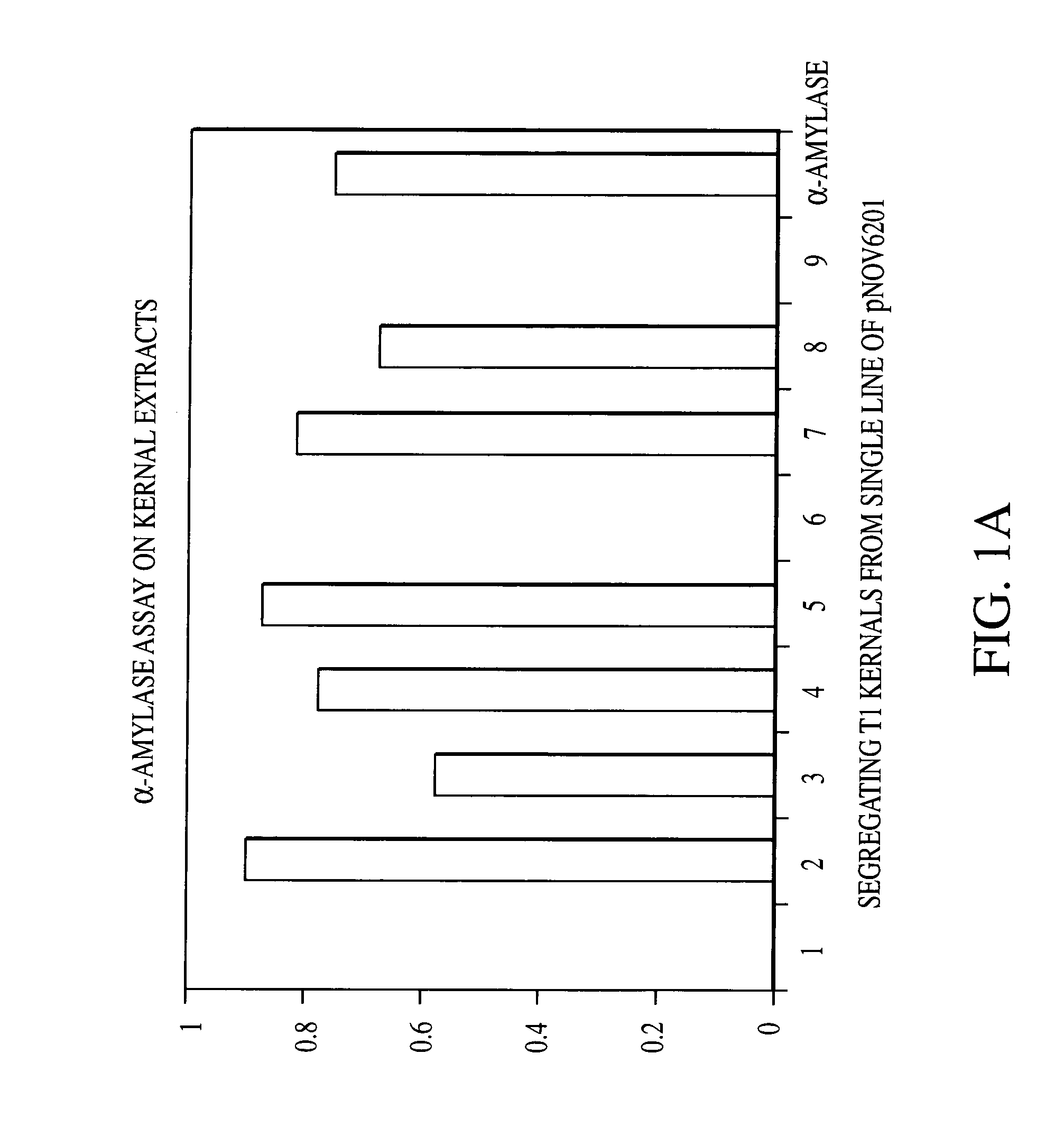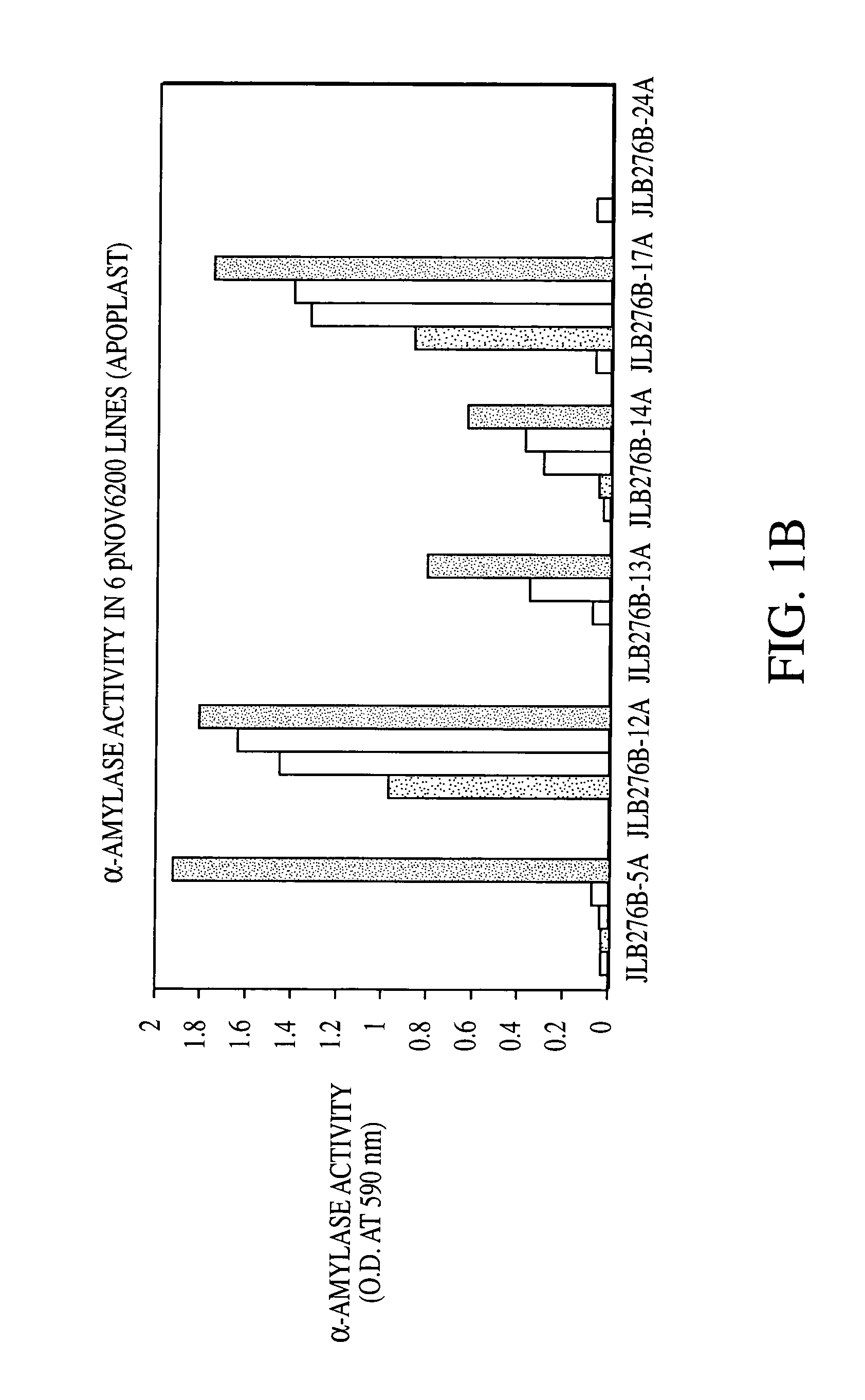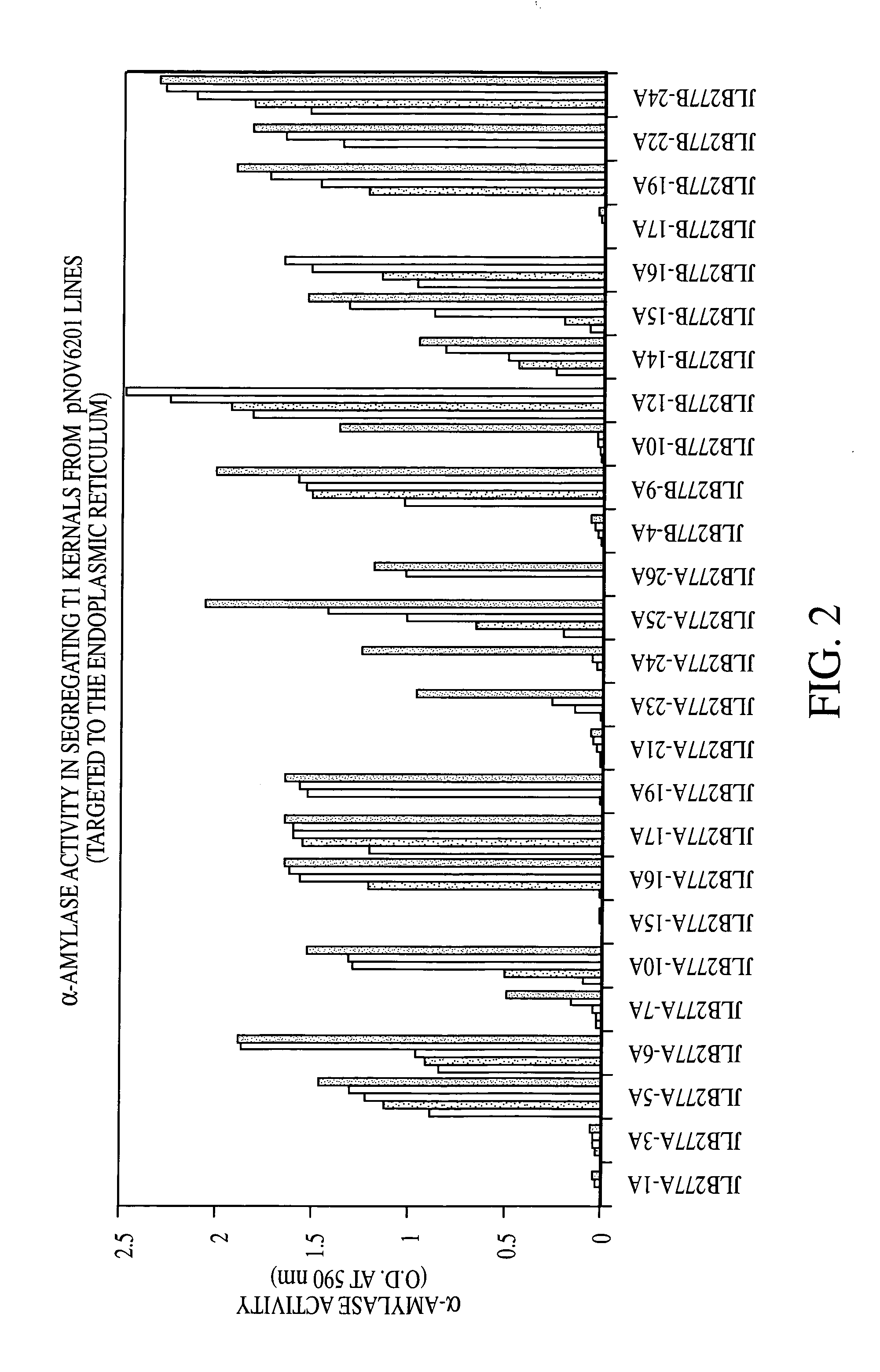Self-processing plants and plant parts
- Summary
- Abstract
- Description
- Claims
- Application Information
AI Technical Summary
Benefits of technology
Problems solved by technology
Method used
Image
Examples
example 1
Construction of Maize-optimized Genes for Hyperthermophilic Starch-processing / Isomerization Enzymes
[0229]The enzymes, α-amylase, pullulanase, α-glucosidase, and glucose isomerase, involved in starch degradation or glucose isomerization were selected for their desired activity profiles. These include, for example, minimal activity at ambient temperature, high temperature activity / stability, and activity at low pH. The corresponding genes were then designed by using maize preferred codons as described in U.S. Pat. No. 5,625,136 and synthesized by Integrated DNA Technologies, Inc. (Coralville, Iowa).
[0230]The 797GL3 α-amylase, having the amino acid sequence SEQ ID NO:1, was selected for its hyperthermophilic activity. This enzyme's nucleic acid sequence was deduced and maize-optimized as represented in SEQ ID NO:2. Similarly, the 6gp3 pullulanase was selected having the amino acid sequence set forth in SEQ ID NO:3. The nucleic acid sequence for the 6gp3 pullulanase was deduced and maiz...
example 2
Expression of Fusion of 797GL3 α-amylase and Starch Encapsulating Region in E. coli
[0233]A construct encoding hyperthermophilic 797GL3 α-amylase fused to the starch encapsulating region (SER) from maize granule-bound starch synthase (waxy) was introduced and expressed in E. coli. The maize granule-bound starch synthase cDNA (SEQ ID NO:7) encoding the amino acid sequence (SEQ ID NO:8)(Klosgen RB, et al. 1986) was cloned as a source of a starch binding domain, or starch encapsulating region (SER). The full-length cDNA was amplified by RT-PCR from RNA prepared from maize seed using primers SV57 (5′AGCGAATTCATGGCGGCTCTGGCCACGT 3′) (SEQ ID NO: 22) and SV58 (5′AGCTAAGCTTCAGGGCGCGGCCACGTTCT 3′) (SEQ ID NO: 23) designed from GenBank Accession No. X03935. The complete cDNA was cloned into pBluescript as an EcoRI / HindIII fragment and the plasmid designated pNOV4022.
[0234]The C-terminal portion (encoded by bp 919–1818) of the waxy cDNA, including the starch-binding domain, was amplified from ...
example 3
Isolation of Promoter Fragments for Endosperm-specific Expression in Maize
[0237]The promoter and 5′ noncoding region I (including the first intron) from the large subunit of Zea mays ADP-gpp (ADP-glucose pyrophosphorylase) was amplified as a 1515 base pair fragment (SEQ ID NO:11) from maize genomic DNA using primers designed from Genbank accession M81603. The ADP-gpp promoter has been shown to be endosperm-specific (Shaw and Hannah, 1992).
[0238]The promoter from the Zea mays γ-zein gene was amplified as a 673 bp fragment (SEQ ID NO:12) from plasmid pGZ27.3 (obtained from Dr. Brian Larkins). The γ-zein promoter has been shown to be endosperm-specific (Torrent et al. 1997).
PUM
| Property | Measurement | Unit |
|---|---|---|
| Temperature | aaaaa | aaaaa |
| Temperature | aaaaa | aaaaa |
| Volume | aaaaa | aaaaa |
Abstract
Description
Claims
Application Information
 Login to View More
Login to View More - R&D
- Intellectual Property
- Life Sciences
- Materials
- Tech Scout
- Unparalleled Data Quality
- Higher Quality Content
- 60% Fewer Hallucinations
Browse by: Latest US Patents, China's latest patents, Technical Efficacy Thesaurus, Application Domain, Technology Topic, Popular Technical Reports.
© 2025 PatSnap. All rights reserved.Legal|Privacy policy|Modern Slavery Act Transparency Statement|Sitemap|About US| Contact US: help@patsnap.com



